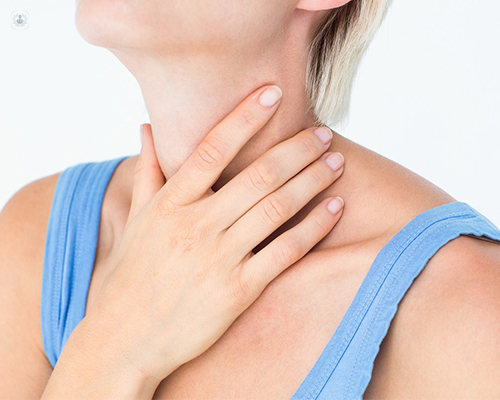Dysmotility: a focus on the oesophagus
Autore:The role of your oesophagus is to pass food from the mouth to the stomach. To do this, the muscles contract in a coordinated motion. However, if these muscles become too weak, strong or uncoordinated, swallowing food can become uncomfortable or difficult and food may become stuck in the chest after eating. Dr John Martin, a gastroenterologist, explains the potential causes of oesophageal dysmotility and how it is treated.

What is oesophageal dysmotility?
Food passes through the oesophagus into the stomach aided by coordinated contraction of the muscles in the oesophageal wall. When these contractions become disordered, it can cause discomfort or pain, or make it difficult to swallow food.
How is oesophageal dysmotility diagnosed?
When a patient has symptoms of pain or difficulty on swallowing the first investigation is normally a gastroscopy to exclude inflammation or a blockage in the oesophagus. In this procedure, a thin tube (medically referred to as an endoscope) with a camera and sometimes a light is inserted through the mouth and guided down the digestive tract. If the gastroscopy results are normal, then a test called a manometry is often performed. This involves passing a small tube through the nose into the oesophagus and measuring the pressure, contractions and acid levels over 24 hours. This will diagnose oesophageal motility problems, if present, and will distinguish between a variety of different disorders, such as problems with the oesophageal muscles themselves, or abnormalities in relaxation of the sphincter at the bottom of the oesophagus.
Can GERD cause oesophageal dysmotility?
Gastroesophageal reflux disease (GERD), also known as acid reflux, is certainly associated with oesophageal dysmotility and the symptoms in patients may result from a combination of acid reflux and abnormal contraction of the oesophageal muscles. Exposure to acid may make the oesophageal muscles ‘irritable’ and trigger dysmotility.
What is oesophageal dysmotility treatment?
Oesophageal dysmotility can be difficult to treat. Gastroenterologists tend to treat GERD first and, if successful, the oesophagus will be less irritable and function better. If this is not successful, your specialist may recommend one or more of the following treatments:
- Peppermint oil
- Calcium channel blockers
- Nitrates
- Antidepressants
- Injections of Botox into the oesophagus
- Dilatation (stretching) of the oesophagus
For more information regarding dysmotility, see Dr Martin’s other article which explains causes and treatments of dysmotility in the entire intestinal tract, not only in the oesophagus.
If you’re interested in knowing more about oesophageal dysmotility or any other condition in the field of gastroenterology, don’t hesitate to visit Dr Martin’s profile and book a consultation to see what he can do for you.


